STEM Books: What (We Think) Works
Posted by Yamini Vijayan on May 11, 2017Since its inception, Pratham Books has published a range of picture books that explore STEM (Science, Technology, Engineering and Math) topics in interesting ways. But it is since 2015 that we have been doing this in a much more focussed manner. The main reason for this was the realization that there aren’t enough multilingual information books available for early readers in India. The fact that many children find science and math slightly daunting made this even more of an interesting challenge because we felt that we could help change this perception by creating fun, memorable books around STEM topics.
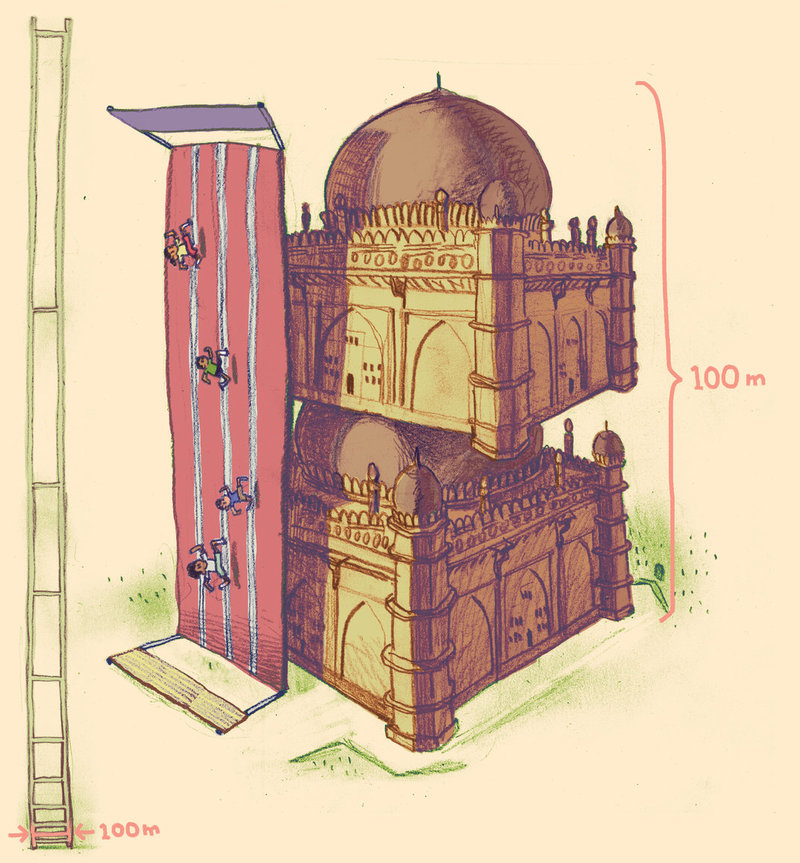
While we've been exploring a number of ways to introduce STEM topics to children, one of the biggest challenges has been to present information accurately, imaginatively and in a simple way without making it seem 'textbookish'. So it was essential that we paid attention to the narrative, plot and tone of each book so that children are drawn to it.
Since we work extensively with children from economically disadvantaged backgrounds, it is important that our books are relevant to these children. Conversations with partner organizations who work closely with these children reveal the need for simpler books as their reading fluencies are still developing. Bearing that in mind, our focus has been on creating simple books that encourage children to explore the world around them with an open mind, ask as many questions as they possibly can and find ways to apply their knowledge.
We continue to be keen to create STEM books, so we thought it might be interesting to highlight a few books that were created over the last couple of years, mainly as a way for us to reflect and share our learnings. So what worked?
Clarity of concept – An important aspect of a STEM book is its ability to demonstrate the concept clearly. I Spy! (by Samvida Venkatesh & Sandhya Prabhat) explains the concept of subtraction wonderfully - using play and humour.
Simplicity – Most of our conversations with our outreach partners lead us to the same conclusion: the need for simpler books that match the reading levels of the children we work with. Sunando Chakraborty’s Sniffles, a story about how flu spreads, is an excellent example of this. Also, we adore the central character of this book. Satya, Watch Out! is another good example of simplicity of narrative and plot.
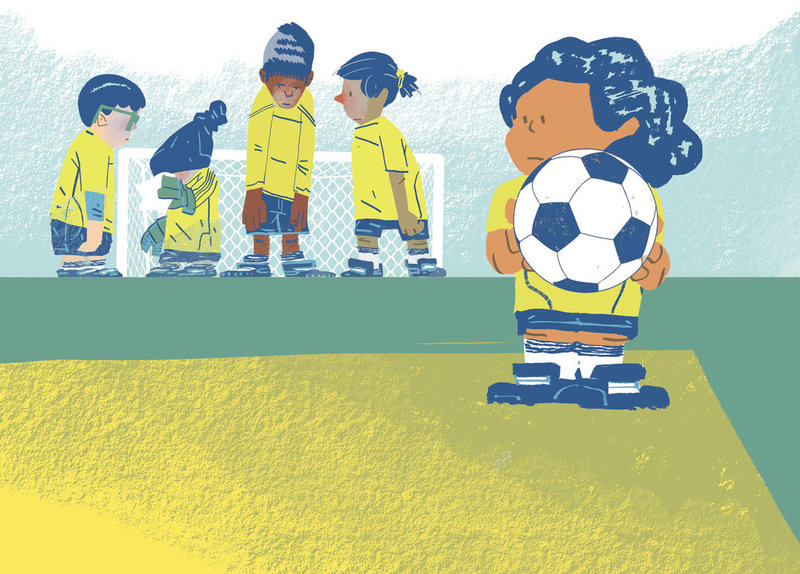
Good storytelling – Jadav and the Tree-Place won the Best Digital Book award at the Publishing Next conference last year. This story – about forester Jadav 'Payeng' Molai - stood out for us as well mainly because it is an inspiring story narrated powerfully by Vinayak Varma.
Using humour – Rajiv Eipe’s Ammachi’s Amazing Machines has been a big hit with our readers for many reasons! But one reason for its popularity is the gentle humour that runs through the story, especially in the art. While it can be challenging to include humour in STEM books (imagine having done this in a story about simple machines!), we can tell you that it works wonders.
Seamlessly blending fiction and non-fiction – It isn’t easy to strike the right balance between fiction and fact, so we were delighted to publish A Butterfly Smile (by Mathangi Subramanian & Lavanya Naidu) which has managed to achieve this. In this, a girl who is new to the city shares her knowledge of butterflies with her classmates and also learns new facts about them. At the same time, it highlights migration due to environmental and economic reasons. Another story that managed to do this successfully is Dum Dum-a-Dum Biryani! (by Gayathri Tirthapura & Kabini Amin) which explores the fascinating relationship between math and cooking.
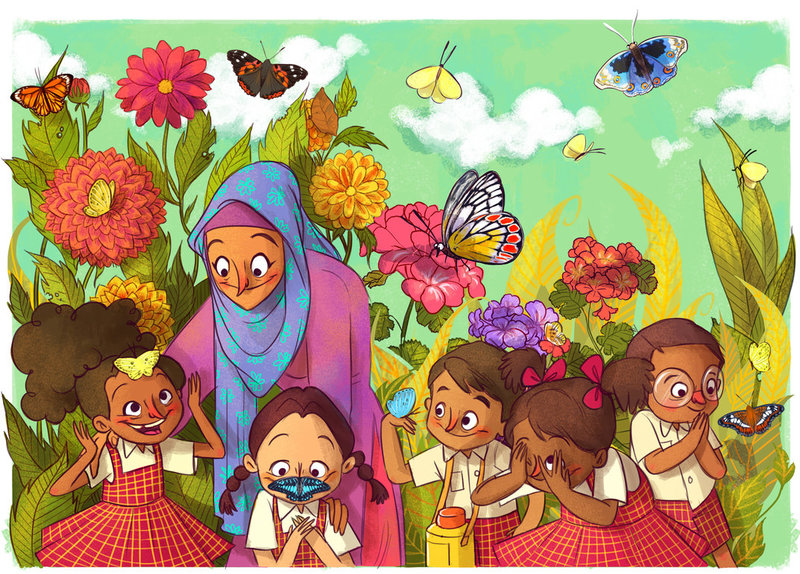
Widening the imagination – What better way to talk about this than directing you to How Far is Far? A book about distances, big numbers and measurement, Sukanya Sinha and Vishnu M Nair have created an exceptional math book which stays true to the core ideas of math: play and exploration.
Memorable characters – Being able to create characters that stick in our memory is an admirable skill. Including memorable characters naturally makes it easier for children to retain the concept and story. In that regard, some of our favourite characters are: the quirky grandmother from How Old is Muttajj? (by Roopa Pai & Kaveri Gopalakrishnan), the endearing gharial from Ghum-Ghum Gharial's Glorious Adventure (by Aparna Kapur & Roshan K), adventurous Arya from Arya in the Cockpit (by Nandita Jayaraj & Upamanyu Bhattacharyya) and the perpetually hungry Neema from Bijal Vachharajani and Priya Kuriyan's What's Neema Eating Today?.
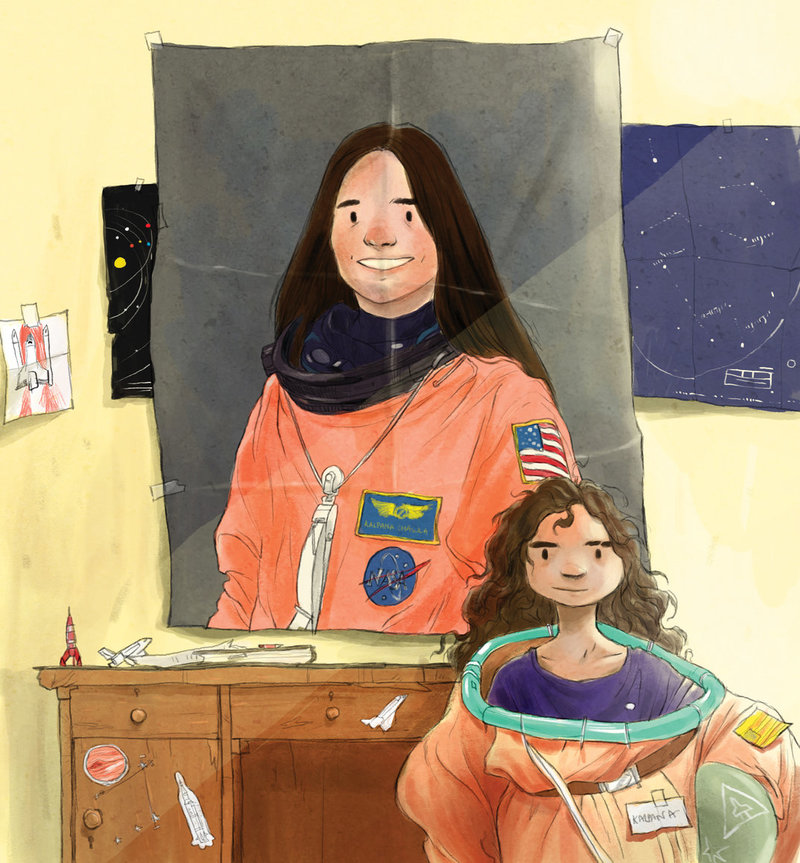
Reinforcing the concept through activities – In the case of STEM books, it’s very helpful to have fun, practical activities at the end of the book. Children seem to enjoy this as it allows them to engage with the concept in a real way and not be passive consumers of information. A Butterfly Smile has a really fun activity at the end of the story. We’ve been told by teachers that How Old is Muttajji? was well received because children enjoyed the interactive nature of the narrative which challenged them to think, much like solving a puzzle.
Pure non-fiction – Although we haven’t done much in terms of straightforward non-fiction, we are beginning to see the massive potential of this. The only reason we didn’t do much of this is for the fear of seeming ‘textbookish’. But the response to books like How Does Toothpaste Get Into the Tube? (by Veena Prasad & Rajiv Eipe) has made us realize that we should look at publishing more of these. This book has certainly done well in choosing the right question – a question that is likely to baffle us, and one that doesn’t have very obvious answers.
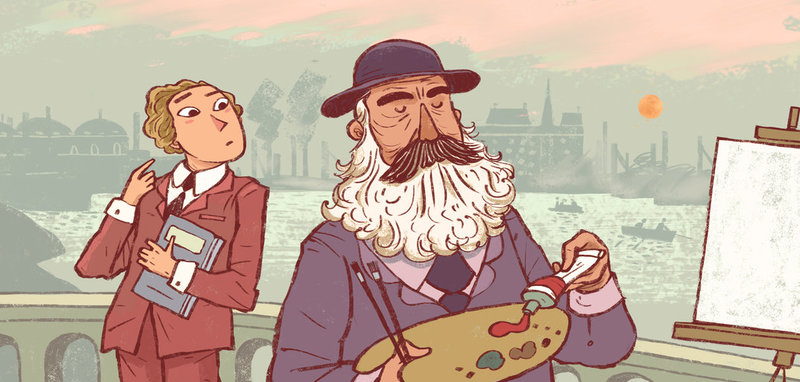
Ability to relate – Some of the stories that children have quickly taken to are the ones that they find easy to relate to. For instance, One by Two (by Maya Bisineer & Shreya Sen) which is essentially about division but involves a lot of food sharing which is familiar to most of us.
Fascinating topics – Very often, finding a theme that is of interest to children is half the battle. Of course, this is an old trick! But, it’s a useful one – especially for STEM stories. Just last year, we commissioned Gul in Space (by Richa Jha & Lavanya Karthik) and Kaakaasaurus (by Shalini Srinivasan & Prabha Mallya) because... well, space and dinosaurs!
Good for Read Aloud – We decided to include this point only because we find that a lot of our books are read aloud in schools. So it’s always wonderful to have STEM stories that are fun to read aloud. A perfect example of this is Anupama Ajinkya Apte's Gulli’s Box of Things - a STEM book we published a few years ago (in print).
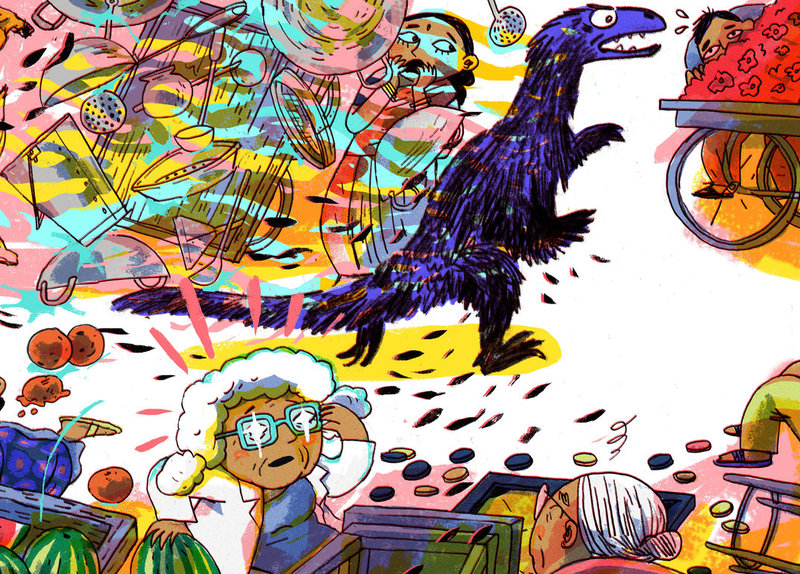
All the STEM books that are mentioned here are available for free on StoryWeaver in English, Hindi, Marathi, Kannada and Tamil.
Be the first to comment.Start to Finish: an illustrator shares his work.
Posted by Remya Padmadas on March 03, 2016
Vishnu M Nair is a visual artist based out of Delhi. He creates contemplative, surreal and humorous narratives in his artworks in many styles and mediums.
'How Far is Far' is a story about scale and comparison, starting small and ending really really large.
The scale of it all really excited me. Below is how I went about planning and illustrating for page 2 of the book i.e 10 m - the second step of the ladder.
Step 1/Layout

Since the imagery of the book was so rich and quirky I chose not to tweak it.
"A three storey building or a mango tree is roughly 10 metres high. A cricket pitch is about twice that length."
I drew the above description out. It would be so strange to see such a visual - so I drew some dumbfounded characters around it.
Step 2/Pencils
A few years ago I learned this neat trick for colouring on photoshop and I planned to use the same method(which you will see later).
I drew out the scene in more detail in pencil - adding more characters and textures - making it believable.Dish antennas, annoying pigeons and a kaamwali bai shooing them away, an ignorant uncle and two boys who's game had just been ruined by this lesson. Adding my own tinier stories into the bigger one is always fun.

Step 3/Colour
I scanned the image into photoshop and cleaned it up a bit first - I also added the ladder from another image into this one.

Then I masked out parts like 'ground','tree' 'mangoes' etc in different layers and coloured them in one by one using a gradient map.

Patient work... but slowly, layer by layer I saw the final image unravel.



Step4 / Lines and numbers
And finally I added lines and numbers to the artwork to complete it.

Voila!
comments (2)Ready to take off? Fun activities for aeroplane buffs!
Posted by Remya Padmadas on March 05, 2016How do Aeroplanes Fly? by Aditi Sarawagi and Lavanya Karthik is a book that will give a child's imagination wings!
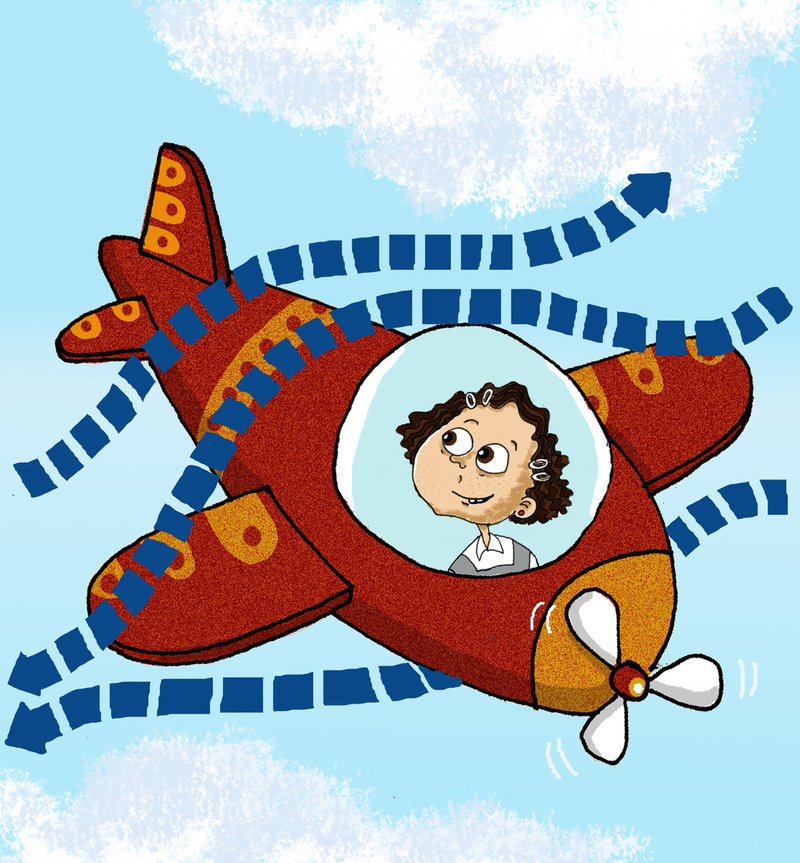
Sarla wished she could fly high like an eagle or like an aeroplane. Of course you can fly, said her new teacher. Sarla shares all that she has learnt about flight and aeroplanes in this delightful book.
ACTIVITIES
Cargo Planes
(Source: http://kidsactivitiesblog.com/77853/stem-paper-airplane-challenge)
Resources
-
Construction Paper
-
Cellotape
-
A handful of coins of different sizes and weight
-
A doorway
-
Whistle
What to do
-
Ask each child to create a paper aeroplane using the YouTube tutorial shared here:
-
Once their plane is ready ask them to stick coins of different size and weigh to it using tape (this is why you need to use construction paper and not regular A4 paper)
-
Decide upon a start line and mark it with masking tape or even a long rope. Make sure it’s opposite a doorway!
-
Ask the children to line up together at the ‘starting line’.
-
When you blow the whistle they all launch their planes.
-
The plane that glides the farthest wins!
Straw Rockets
(Source: http://lifeasmama.com/10-rainy-day-activities-your-kids-will-love/6/)
Resources
-
Drinking straws
-
Paper
-
Glue or cellotape
-
Scissors
-
Crayons or markers.
What to do
-
Cut down pieces of paper and decorate to your desire.
-
Then lightly fold around the end of a straw and tape the paper together (not to the straw) like a cap
-
Then just blow! Kids can see how far each can blow their rockets or come up with their own games.
Target Practice
(Source: http://lifeasmama.com/10-rainy-day-activities-your-kids-will-love/7/)
This is a variation of activity 1, but a little more tricky!
Resources
-
Paper
-
Large sheet of thick board paper.
-
A doorway
-
Whistle
-
Scissors
-
Masking tape.
What to do
-
Ask each child to create a paper aeroplane using the YouTube tutorial shared here: https://youtu.be/qhuRw88A-8c
-
Cut out different sized holes on the board paper and hang it over an open door using masking tape
-
Ask children to line up at a pre-determined ‘starting point’ with their paper aeroplanes.
-
Blow the whistle. Kids must try and get their planes through the holes on the board sheet!
If you have some fun activities based on 'How Do Aeroplanes Fly' share them with us in the comments section below or on Twitter or Facebook.
Be the first to comment.